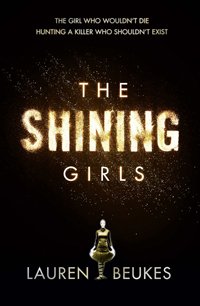Time travelling serial killers are like buses. You don’t see one for ages, then two come along at once. At the end of March we reviewed The Beauty of Murder by AK Benedict and found the time travel to be the frustrating element of the book. Now The Shining Girls has landed on the doormat, following a rather interesting retro-flavoured PR taster.
South African Lauren Beukes is an author, screenwriter and filmmaker. Her second novel Zoo City blended crime with music and magic, winning the Arthur C Clarke award. The Shining Girls again takes a crime outline and this time fills it in with some time travel. It was the subject of an intense bidding war at the 2011 Frankfurt Book Fiar. Now, it hits the shelves as one of the most hyped releases of the year. All of which made me a little nervous about reading it because, in my experience, overblown publicity drives can lead to a great big let-down.
However The Shining Girls largely delivers – and it is all thanks to some clever work by its author. The majority of the story is told from two angles. The first is that of Harper Curtis, a Depression era drifter who chances upon a gateway through time in a run-down Chicago neighbourhood. He uses this to track and eventually kill young women – the ‘shining girls’ of the title. The other viewpoint belongs to Kirby Mazrachi, an intended victim who miraculously got away in 1992. This young woman is relentless in her search for the man who tried to kill her. The hunter has become the hunted.
Frustrated by a lack of funds to pay for a private eye to help in her search, Kirby takes a job as an unpaid intern at the Chicago Sun-Times, but her plans of shadowing a crime reporter are ruined when she is teamed with Dan Velasquez, a sports writer who is more interested in baseball stats. It is an inspired bit of plotting that brings the pair together, and Dan and Kirby are brilliant creations who together form a first-class – if slightly offbeat – team.
This book really succeeds in its characterisations of the many and varied victims, turning crime statistics into living, breathing women. From Harper’s first target, the so-called Glow Girl, a 1930s dance sensation who painted herself in radium to give her striptease act a unique selling point, to the aforementioned Kirby, all are painted in vivid, poignant detail.
Harper himself has few redeeming qualities. He skips from timezone to timezone with glee, picking his victims when they are just children, then returning to do his dirty work when they have matured and found their places in life. Along the way he tinkers with time, muddying the waters by leaving strange clues behind with each body. He steals a lighter from one victim, only to leave it at the scene of another murder. He gives Kirby a toy which had not even been invented when the meeting occurred, and he smiles as he flippantly discards a baseball card featuring a player who has not even been born yet. It’s the jumping about in time which weakens The Shining Girls – and on several occasions I found myself feeling confused over who and what was where – and why.
HarperCollins
Print/Kindle/iBook
£8.75
CFL Rating: 4 Stars
